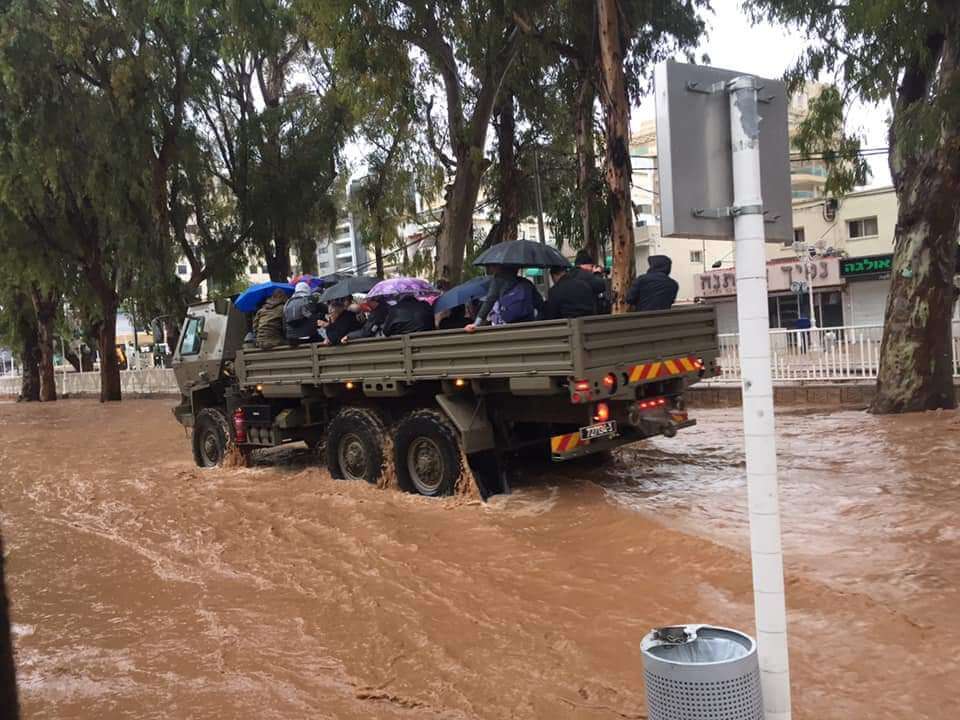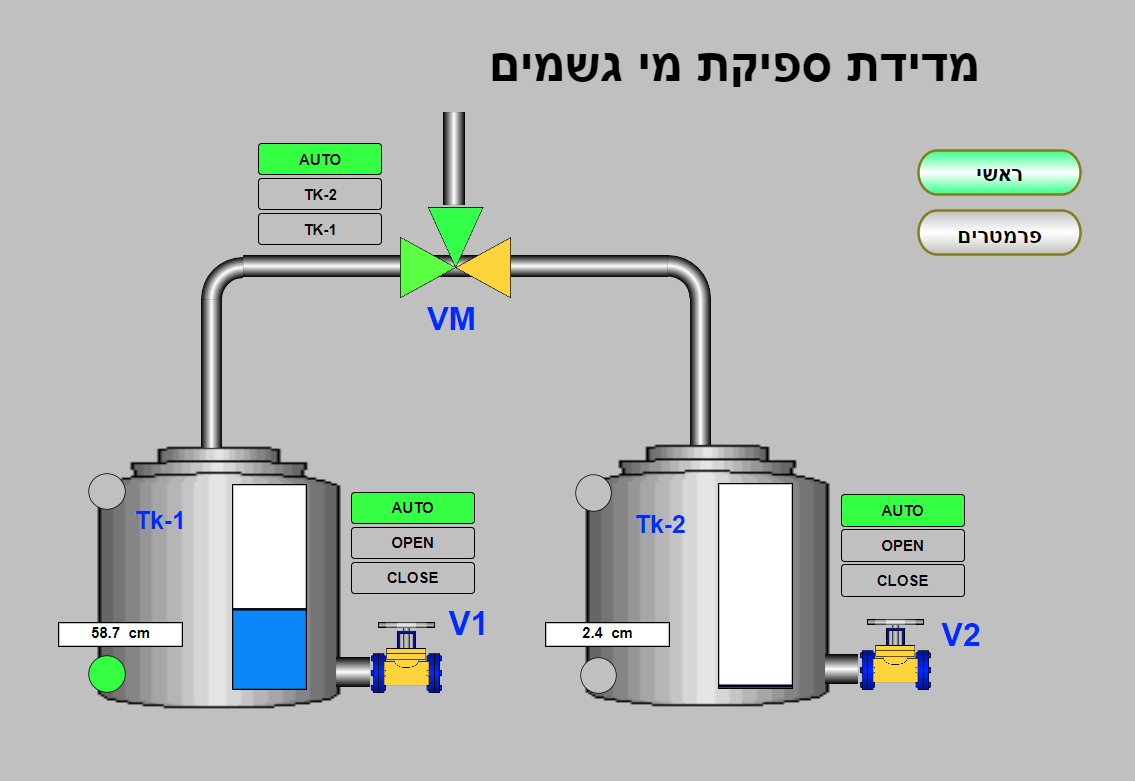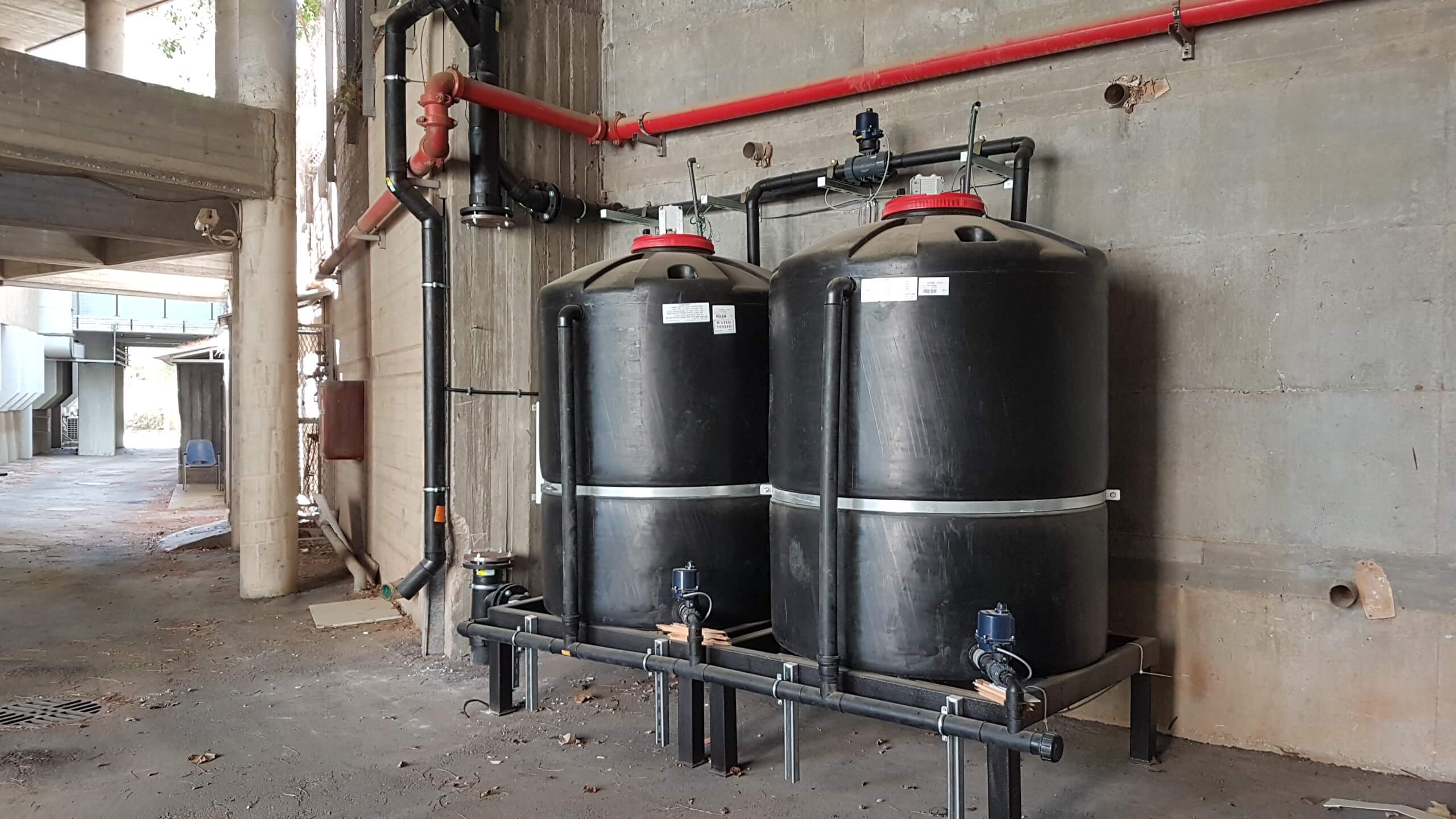A new Israeli development based on rainwater storage tanks that are placed in residential buildings and controlled by a computerized system - may reduce the load on the drainage systems in cities, thus helping to minimize the dangerous floods that we have seen in recent winters
About three years ago, during the storm that hit Tel Aviv, Two young men perished in the disaster where an elevator was flooded in an underground car park. This event took place after for many years the Israeli winter was characterized by days when roads turned into rivers and city streets turned into streams. The solution to this problematic situation is already known and recognized: upgrading the municipal drainage systems, which cannot withstand the load of the rains.
Although since the death of the young men it has become clear to everyone how dangerous the flooding in the cities can be - the upgrade in question is a complicated and expensive move, and therefore the various authorities are in no hurry to carry it out. In a new study conducted at the Technion and recently presented at the biennial national conference for research students at the Grand Water Research Institute at the Technion - another solution to the situation was proposed. This is a simple, cheap and fast development that may ease the pressure placed on the city's infrastructure on rainy days: the placement of tanks that will store the rain that lands on the roofs of the buildings, and a smart system that will carry out a calculated release of this water into the drainage canals. Is this a development that will put an end to urban flooding?
A lot of rain, a little time
In recent winters we have all seen images of flooded streets and submerged cars; Some of us even found ourselves in the middle of such events. But how do they even occur? How do floods form? In the territories built in Israel?

The first reason for this is that our rain events tend to be strong and short - that is, a large amount of rain falls on the ground in a short time. For comparison, the average annual amount of precipitation in rainy London is similar to that which characterizes Tel Aviv, but while in London this amount is spread over all the months of the year - in Tel Aviv it drains to the winter months only. This problem is expected to worsen due to the climate crisis, which causes to extremes in the intensity of the rain events In Israel.
Second, when rain falls in built-up areas, it also flows to sealed concrete or asphalt surfaces, which do not allow water to penetrate and soak into the ground. This is how urban runoff is created: rainwater that moves across the sidewalks and roads and drains into the low areas or into the municipal drainage system. Those built and sealed areas, into which the rainwater does not penetrate, are expanding at a rapid rate - with the urban development and the constant increase in the rate of construction throughout Israel, which also comes at the expense of open areas.
The new development may help prevent the flooding that occurs as a result of the overflow of that urban runoff. It is based on the placement of tanks that will store the rain that lands on the roofs of buildings, and on a smart system that will control the release of water into the municipal drainage system at times when it is relatively free. How significant is this development? It may reduce the load on the infrastructure by 30-20 percent. In addition, the water that will be stored in the tanks can be used by the residents of the building for various purposes, such as flushing toilets or using a dishwasher.
They went out to look for advantages, and found solutions
The new research was conducted under the leadership of Prof. Eran Friedler from the Environmental, Water and Agricultural Engineering Unit of the Faculty of Civil and Environmental Engineering at the Technion, and Ofer Shanir, a PhD student at the Faculty, in collaboration with Prof. Luca Vasaro from the Technical University of Denmark. Originally, the researchers did not plan to find a possible solution to urban flooding. In fact, the first study they conducted was intended for a different purpose: examining benefits The use of rainwater for water consumption of residents in cities.
"The research focused on the issue of saving drinking water - an expensive product that is in short supply in Israel," Friedler explains. According to him, consuming desalinated water for uses such as flushing toilets is also a waste. "Therefore, a development that will reduce the demand for desalinated water and consequently the energy consumption required for desalination, with the help of a simple means that makes the city more sustainable - is welcome," he says. Indeed, the computerized system evaluates the water consumption of the tenants - and tries to provide them with the necessary amount from the storage tanks, which will prevent the use of drinking water or desalinated water for uses that do not require it.

In the follow-up study, presented as mentioned at the conference, the efficiency of the containers was tested with the help of a computer model. "We imagined a residential neighborhood in the center of the country that has about 150 residential buildings: we mapped its roofs, and measured the capabilities of its central drainage system," says Friedler. "Imagine a situation where in such a neighborhood each building has a storage of 10 cubic meters (10 liters - XNUMX liters)". In addition to the neighborhood data, the researchers also entered into the computerized system the weather conditions that prevailed in the neighborhood during two extreme rain events that occurred in Israel: the storms of End of February 2010 And of End of November 2020.
Containers - like mushrooms after the rain?
As mentioned, the results of the computerized experiment showed that thanks to the new development there was a reduction of more than 20 percent in the load on the drainage system in the neighborhood that the researchers simulated. This figure highlights the viability of the new development: since it is a relatively simple system, it may be the cheapest and fastest solution to implement for reducing flooding in cities. According to Friedler, many built-up neighborhoods already have gutters that drain the rainwater, so the next step is simple: connect them to tanks placed at the bottom of the building or underground.
According to Friedler, the roofs make up about 40 percent of the impervious area in the city, so these are large areas. "If this development enters new neighborhoods, it will be possible to plan smaller drainage systems from the beginning - so the financial savings may be large," he explains.

At the same time, the researchers emphasize that this is not a development that can solve all flooding incidents in cities. One of the reasons for this is that in events where the rain falls with high intensity non-stop, the tanks do not have a low moment - in which they can release the excess water into the drainage systems. "Therefore, such a method of collecting rainwater can be a 'first line of defense' in a system of control and monitoring of the drainage system - but for very extreme events (such as the events of late November 2020 - Yish), it will not be enough," explains Shanir.
Another and very durable method, which has been applied for many years around the world (including in rainier areas than Israel), she rain harvesting - Creation of infiltration of the precipitation into the ground, near the place of its fall. For this, sealed surfaces (parking lots, sidewalks, traffic islands, etc.) must be made permeable; This is done by building them from materials that allow percolation or by adding passages for water inside the sealed surfaces, and also by planting perennial vegetation whose roots accelerate percolation.
These days the researchers are already working on follow-up studies in which the use of the system will be tested over a longer period of time and on a more extensive scale. So if in a few years rainwater storage tanks will become a common sight at the entrance to multi-story buildings in Israel - remember where you first heard about them.
More of the topic in Hayadan:
- A tiny robot that will enter the body and clean drainage tubes in hydrocephalus patients
- An archaeological mystery at the University of Haifa excavations in the ancient city of Susita: what is a modern cork of beer doing in a closed drainage channel from 2000 years ago?
- Hotter, more humid, more dangerous
- In the coming weeks, the company that will carry out the biological purification project of the bottom of the Kishon River will be determined
- UN: By 2007 - half of the world will live in cities
